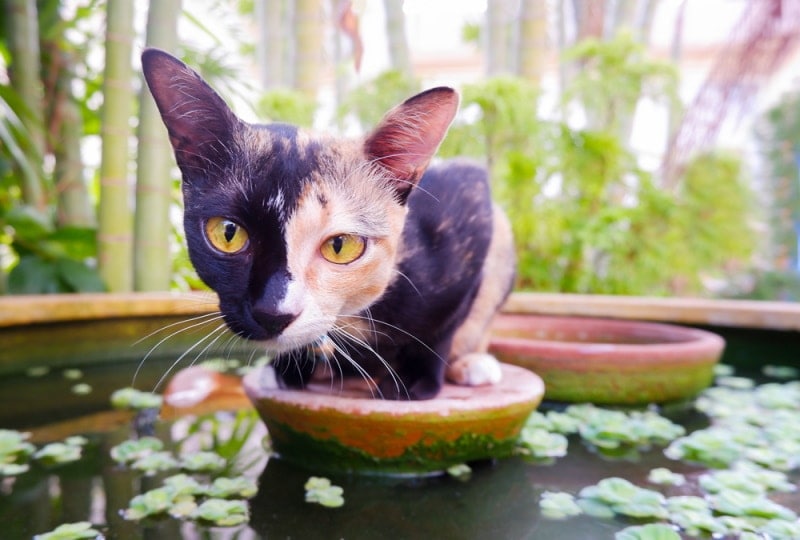When Does a Kitten’s Eyes Change Color? Vet-Verified Feline Anatomy Facts & FAQ

Updated on
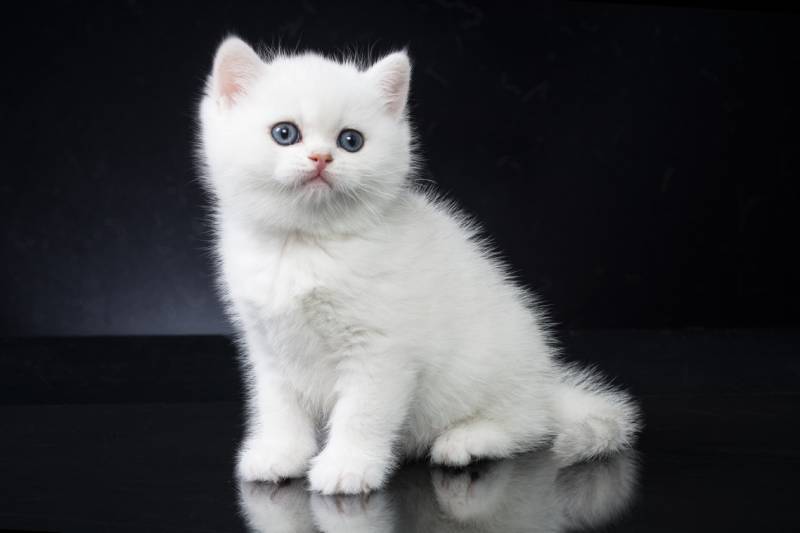
Just like many human babies, every kitten comes into the world with blue eyes, which often change colors when they get older.
But while it can take a child’s eyes up to 6–9 months to settle into a permanent color, a kitten’s eye color starts to change as early as 7 weeks! By the 12-week mark, they’ll have their final eye color.
But is there a way to tell what color eyes your kitten will have before then? What’s the rarest eye color for a cat? We’ll answer both those questions and more here.
How Can You Tell What Color a Kitten’s Eyes Will Be?
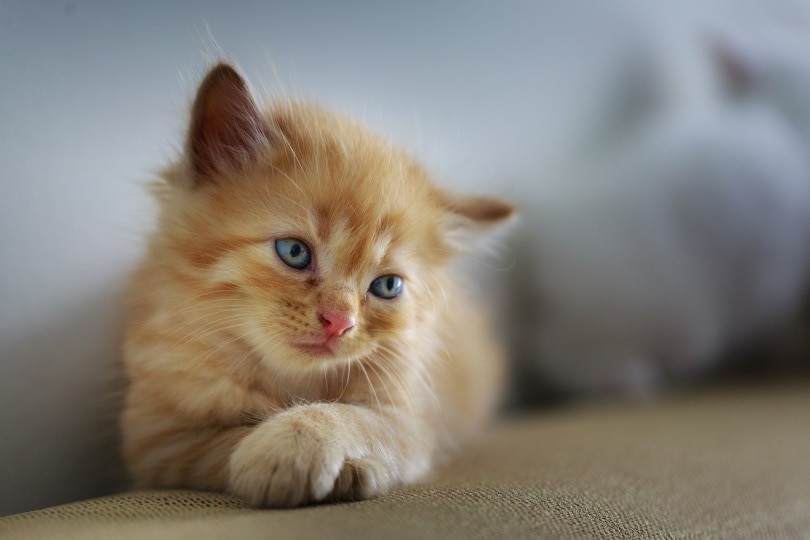
While you can look at the color of their parents’ eyes to try to guess what eye color your kitten will have, there is no way to know until they develop their final color. Still, at the 7-week point, you can start monitoring their eye color for clues.
If your kitten’s eyes are going to change color, it’ll start to happen at some point between 7 and 8 weeks. If they’re still blue at that point, chances are that they’re staying blue.
However, from the 7-week point, they can change to a wide array of colors, including green, gold, amber, yellow-gold, or different shades of blue!
What Is the Rarest Eye Color for Cats?
While cats start with blue eyes, it’s one of the rarest eye colors for a cat to have when they mature. They’re more common in white cats, but even then, there’s no guarantee. Other uncommon eye colors for cats, if not as rare as blue, are orange and copper. The other eye colors are simply far more common.
What Is the Most Common Eye Color for Cats?
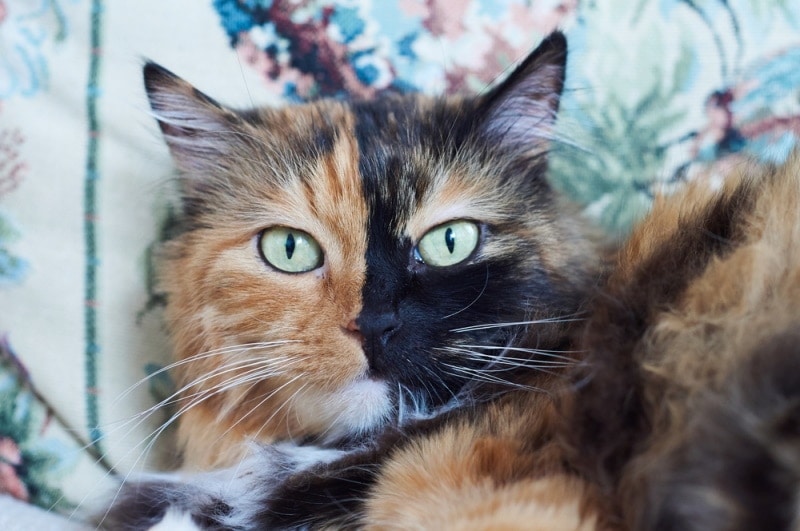
The two most common eye colors for cats are green and yellow or some variation between the two. If your cat is going to have either of these eye colors, chances are that you’ll start to notice their eyes changing between 6 and 7 weeks of age, although some kittens will hold onto their blue eyes just a bit longer before they change.
But just because green and yellow eyes are the most common for cats, that doesn’t mean they aren’t stunning and won’t give your cat a beautiful appearance.
When Can You Start Holding Kittens?
While it can be extremely tempting to pick up a newborn kitten to get a look at their beautiful blue eyes before they change, you should only handle a kitten before they reach 2 weeks old if there is a medical issue or if they are orphaned.
Even if you’re incredibly careful, small kittens are extremely fragile, and handling them can lead to accidental injuries. Momma cats are also especially protective of their young at this age, and chances are that they may react violently if someone tries to interact with their kittens.
But once the kittens reach 2 weeks of age, it’s actually crucial that you start spending time bonding with them, to get them used to human interaction. The 2- to 7-week mark is a critical part of a cat’s development, being the sensitive period for socialization. They need to have gentle and positive interactions with people to be socialized properly, which will have an impact on their adult life.
When Do Kittens Open Their Eyes?
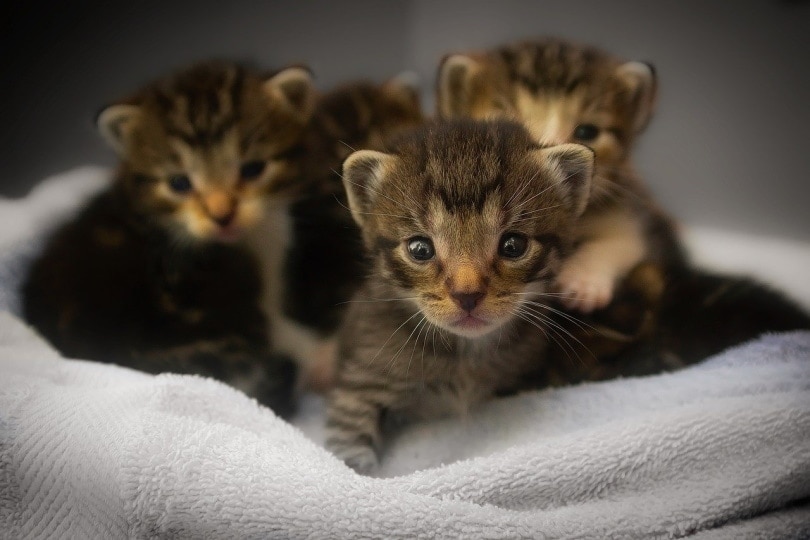
If it bums you out that you can’t pick up and cuddle the baby kitten until they’re at least 2 weeks old, you can take solace in the fact that you won’t be able to see their eyes until after 7 to 10 days anyway.
Kittens should be able to open both eyes by the 2-week mark, which is when you can begin to pick them up. Just keep in mind that while kittens can open their eyes at 2 weeks, they don’t get full vision until after the 3-week mark.
How Many Kittens Are Usually in a Litter?
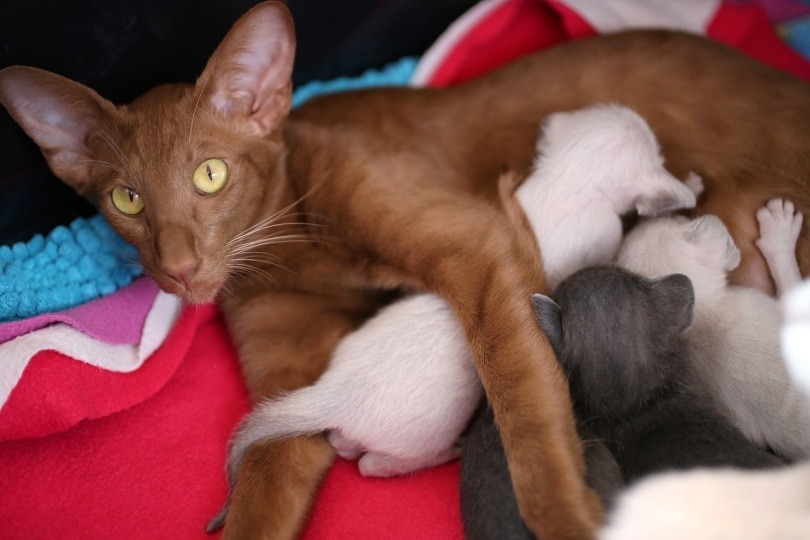
When cats have babies, they usually don’t have them one at a time. A cat is usually in labor for 6–12 hours. Anywhere from one to nine kittens can be part of a litter, but typically, there are between three and five kittens.
A mother cat’s first litter is usually small, so don’t be surprised if there are only two or three kittens. You’ll still have plenty of kittens to spend time with when they’re old enough, and there are plenty of opportunities for different-colored eyes!
Do Father Cats Know Their Kittens?
While momma cats undoubtedly have strong maternal instincts, tomcats are notoriously absent. Once they sire a litter, their instincts are simply to head out and find more female cats to mate with.
Even if you keep a male tomcat around the litter that they sired, they’re not going to have any real paternal instincts. Tomcats simply don’t have any interest in raising kittens, and they don’t have the instincts to do so.
The good news is that if you leave the kittens around their father in a controlled environment, they could play with them, but to the father, it’s likely no different than playing with any other cat or kitten.
Final Thoughts
When you’re raising kittens, there’s a ton of work and many developmental milestones to track and keep up with. But one that you don’t want to miss and that can be super fun is the changing of their eye colors.
The blue eyes are stunning, but the surprise of finding out what eye color each kitten will have is exciting too. Of course, if you just adopted an 8-week-old kitten and they still have blue eyes, chances are that they’re staying that way.
But if the eyes have already changed colors, they still have 4-5 weeks to settle into their final hue. Just keep your own eye on them to see what color they’re going to be.
Featured Image Credit: Oksana Susoeva, Shutterstock





